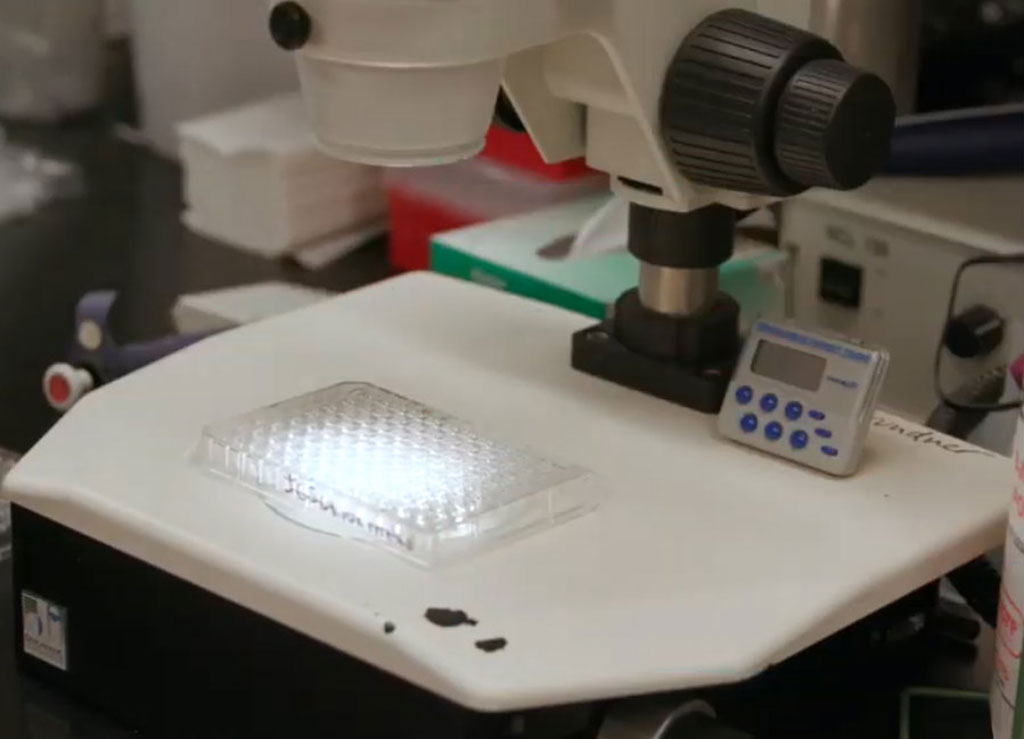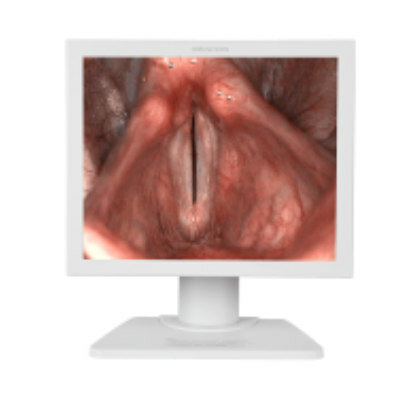New Cell-Free Test Rapidly Detects COVID-19 Neutralizing Antibodies
|
By HospiMedica International staff writers Posted on 26 Oct 2020 |

Illustration
Scientists have developed a new way to quantify whether an individual has neutralizing antibodies that could prevent the SARS-CoV-2 virus from infecting cells using a method that is more broadly applicable than those currently available.
Dr. Stephen Smith of Seattle Children's Research Institute (Seattle, WA, USA) developed the new way to test himself after he suspected he had COVID-19 in late February when the testing criteria had yet to be expanded to include individuals with his symptoms that included muscle aches, gastrointestinal distress and sudden loss of smell. The newly developed diagnostic could have a range of potential commercial applications from broad community testing to assessing vaccine responses and screening for convalescent plasmas that have particularly high levels of neutralizing antibodies as a potential treatment.
The novel coronavirus enters cells when the viral spike protein binds to the ACE2 protein on the surface of human cells. Neutralizing antibodies that block this binding are thought to contribute to immunity to the virus in people who recover from COVID-19. Smith applied a technique called immunoprecipitation detected by flow cytometry (IP-FCM) to study the interactions between the proteins and to look for evidence that COVID-19 antibodies were inhibiting the interaction and blocking the virus from binding to cells. Instead of relying on live cells and viruses like other available blood tests, IP-FCM uses recombinant - or lab-made - proteins and instruments commonly available in commercial serological labs.
Using IP-FCM, Smith tested the blood samples from 24 cohort participants. The test showed that 92% of the participants had antibodies to the novel coronavirus at an average of a little over a month post-infection. Results were validated with 30 control samples. Interestingly, when researchers looked at the test results against other data gathered from the cohort, they found that those who mounted a fever had higher levels of antibodies. The research team also plans to retest the samples to see how antibody levels change over time. In addition to exploring opportunities to commercialize the diagnostic, Smith and his team are now using the test to rapidly screen thousands of approved drugs that could potentially interfere with the binding between ACE2 and the spike protein, and potentially identify drugs capable of preventing or treating COVID-19.
“Other tests that provide insight into immunity work by taking antibodies from your blood and mixing them together with a virus and then exposing that mixture to live cells. Three days later they can determine immunity based on whether your blood prevented the viruses from infecting the cells or not,” said Smith. “Our cell-free test can provide that same information overnight.”
“It’s going to be very important to look at people over a longer time period to track their antibody levels and whether or not they get re-infected,” added Smith. “Until we do those studies, we really don’t know how these clinical measures of antibody neutralization relate to susceptibility in the real world.”
Related Links:
Seattle Children's Research Institute
Dr. Stephen Smith of Seattle Children's Research Institute (Seattle, WA, USA) developed the new way to test himself after he suspected he had COVID-19 in late February when the testing criteria had yet to be expanded to include individuals with his symptoms that included muscle aches, gastrointestinal distress and sudden loss of smell. The newly developed diagnostic could have a range of potential commercial applications from broad community testing to assessing vaccine responses and screening for convalescent plasmas that have particularly high levels of neutralizing antibodies as a potential treatment.
The novel coronavirus enters cells when the viral spike protein binds to the ACE2 protein on the surface of human cells. Neutralizing antibodies that block this binding are thought to contribute to immunity to the virus in people who recover from COVID-19. Smith applied a technique called immunoprecipitation detected by flow cytometry (IP-FCM) to study the interactions between the proteins and to look for evidence that COVID-19 antibodies were inhibiting the interaction and blocking the virus from binding to cells. Instead of relying on live cells and viruses like other available blood tests, IP-FCM uses recombinant - or lab-made - proteins and instruments commonly available in commercial serological labs.
Using IP-FCM, Smith tested the blood samples from 24 cohort participants. The test showed that 92% of the participants had antibodies to the novel coronavirus at an average of a little over a month post-infection. Results were validated with 30 control samples. Interestingly, when researchers looked at the test results against other data gathered from the cohort, they found that those who mounted a fever had higher levels of antibodies. The research team also plans to retest the samples to see how antibody levels change over time. In addition to exploring opportunities to commercialize the diagnostic, Smith and his team are now using the test to rapidly screen thousands of approved drugs that could potentially interfere with the binding between ACE2 and the spike protein, and potentially identify drugs capable of preventing or treating COVID-19.
“Other tests that provide insight into immunity work by taking antibodies from your blood and mixing them together with a virus and then exposing that mixture to live cells. Three days later they can determine immunity based on whether your blood prevented the viruses from infecting the cells or not,” said Smith. “Our cell-free test can provide that same information overnight.”
“It’s going to be very important to look at people over a longer time period to track their antibody levels and whether or not they get re-infected,” added Smith. “Until we do those studies, we really don’t know how these clinical measures of antibody neutralization relate to susceptibility in the real world.”
Related Links:
Seattle Children's Research Institute
Latest COVID-19 News
- Low-Cost System Detects SARS-CoV-2 Virus in Hospital Air Using High-Tech Bubbles
- World's First Inhalable COVID-19 Vaccine Approved in China
- COVID-19 Vaccine Patch Fights SARS-CoV-2 Variants Better than Needles
- Blood Viscosity Testing Can Predict Risk of Death in Hospitalized COVID-19 Patients
- ‘Covid Computer’ Uses AI to Detect COVID-19 from Chest CT Scans
- MRI Lung-Imaging Technique Shows Cause of Long-COVID Symptoms
- Chest CT Scans of COVID-19 Patients Could Help Distinguish Between SARS-CoV-2 Variants
- Specialized MRI Detects Lung Abnormalities in Non-Hospitalized Long COVID Patients
- AI Algorithm Identifies Hospitalized Patients at Highest Risk of Dying From COVID-19
- Sweat Sensor Detects Key Biomarkers That Provide Early Warning of COVID-19 and Flu
- Study Assesses Impact of COVID-19 on Ventilation/Perfusion Scintigraphy
- CT Imaging Study Finds Vaccination Reduces Risk of COVID-19 Associated Pulmonary Embolism
- Third Day in Hospital a ‘Tipping Point’ in Severity of COVID-19 Pneumonia
- Longer Interval Between COVID-19 Vaccines Generates Up to Nine Times as Many Antibodies
- AI Model for Monitoring COVID-19 Predicts Mortality Within First 30 Days of Admission
- AI Predicts COVID Prognosis at Near-Expert Level Based Off CT Scans
Channels
Critical Care
view channel
Light-Based Technology to Measure Brain Blood Flow Could Diagnose Stroke and TBI
Monitoring blood flow in the brain is crucial for diagnosing and treating neurological conditions such as stroke, traumatic brain injury (TBI), and vascular dementia. However, current imaging methods like... Read more
AI Heart Attack Risk Assessment Tool Outperforms Existing Methods
For decades, doctors have relied on standardized scoring systems to assess patients with the most common type of heart attack—non-ST-elevation acute coronary syndrome (NSTE-ACS). The GRACE score, used... Read moreSurgical Techniques
view channel
Minimally Invasive Endoscopic Surgery Improves Severe Stroke Outcomes
Intracerebral hemorrhage, a type of stroke caused by bleeding deep within the brain, remains one of the most challenging neurological emergencies to treat. Accounting for about 15% of all strokes, it carries... Read more
Novel Glue Prevents Complications After Breast Cancer Surgery
Seroma and prolonged lymphorrhea are among the most common complications following axillary lymphadenectomy in breast cancer patients. These postoperative issues can delay recovery and postpone the start... Read morePatient Care
view channel
Revolutionary Automatic IV-Line Flushing Device to Enhance Infusion Care
More than 80% of in-hospital patients receive intravenous (IV) therapy. Every dose of IV medicine delivered in a small volume (<250 mL) infusion bag should be followed by subsequent flushing to ensure... Read more
VR Training Tool Combats Contamination of Portable Medical Equipment
Healthcare-associated infections (HAIs) impact one in every 31 patients, cause nearly 100,000 deaths each year, and cost USD 28.4 billion in direct medical expenses. Notably, up to 75% of these infections... Read more
Portable Biosensor Platform to Reduce Hospital-Acquired Infections
Approximately 4 million patients in the European Union acquire healthcare-associated infections (HAIs) or nosocomial infections each year, with around 37,000 deaths directly resulting from these infections,... Read moreFirst-Of-Its-Kind Portable Germicidal Light Technology Disinfects High-Touch Clinical Surfaces in Seconds
Reducing healthcare-acquired infections (HAIs) remains a pressing issue within global healthcare systems. In the United States alone, 1.7 million patients contract HAIs annually, leading to approximately... Read moreHealth IT
view channel
Printable Molecule-Selective Nanoparticles Enable Mass Production of Wearable Biosensors
The future of medicine is likely to focus on the personalization of healthcare—understanding exactly what an individual requires and delivering the appropriate combination of nutrients, metabolites, and... Read moreBusiness
view channel
Philips and Masimo Partner to Advance Patient Monitoring Measurement Technologies
Royal Philips (Amsterdam, Netherlands) and Masimo (Irvine, California, USA) have renewed their multi-year strategic collaboration, combining Philips’ expertise in patient monitoring with Masimo’s noninvasive... Read more
B. Braun Acquires Digital Microsurgery Company True Digital Surgery
The high-end microsurgery market in neurosurgery, spine, and ENT is undergoing a significant transformation. Traditional analog microscopes are giving way to digital exoscopes, which provide improved visualization,... Read more
CMEF 2025 to Promote Holistic and High-Quality Development of Medical and Health Industry
The 92nd China International Medical Equipment Fair (CMEF 2025) Autumn Exhibition is scheduled to be held from September 26 to 29 at the China Import and Export Fair Complex (Canton Fair Complex) in Guangzhou.... Read more
















